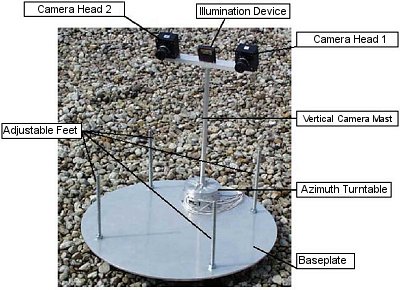Microcam
Within the frame of the BepiColombo mission, a planetary microcamera and its mechanical/control system have been studied for the Mercury Surface Element (MSE). This study has lead to the development of a complete conceptual design (as shown below) and the realization of a fully functional breadboard of the whole system (Jena Optronik):
- An imaging system based on two camera heads for stereoscopic vision plus an illuminating device for night observation
- The detector of the camera head, based on an active pixel sensor (APS)
- A deployable mechanical structure to compensate the lander attitude and enable 360 degrees panoramic pointing capability
 |
|
The Planet MicroCam mechatronics system breadboard |
The developed breadboard is based on commercial components, both camera heads are simple commercial off the shelf units and do not represent the design in form, mass and performance.
SCI-AI is currently planning an activity to focus on the imaging system performances at extremely low temperature, around 100 K (for example, night side of the planet Mercury or the Moon's surface temperature). Such a low operating temperature requires an optimized optical, electrical, thermal and mechanical design. Many issues have indeed to be addressed:
- Low temperature electro-optical behaviour of APS (Active Pixel Sensor) and surrounding parts
- Low temperature optical design and testing
- Optimum thermal design to limit gradients within the imaging system (and therefore mechanical stress) while using minimum resources (no heater)
Radiation tolerance will also be integrated in the overall design constraints. Eventually, a "flight-like" imaging system will be manufactured and tested, serving as a technology demonstrator.
